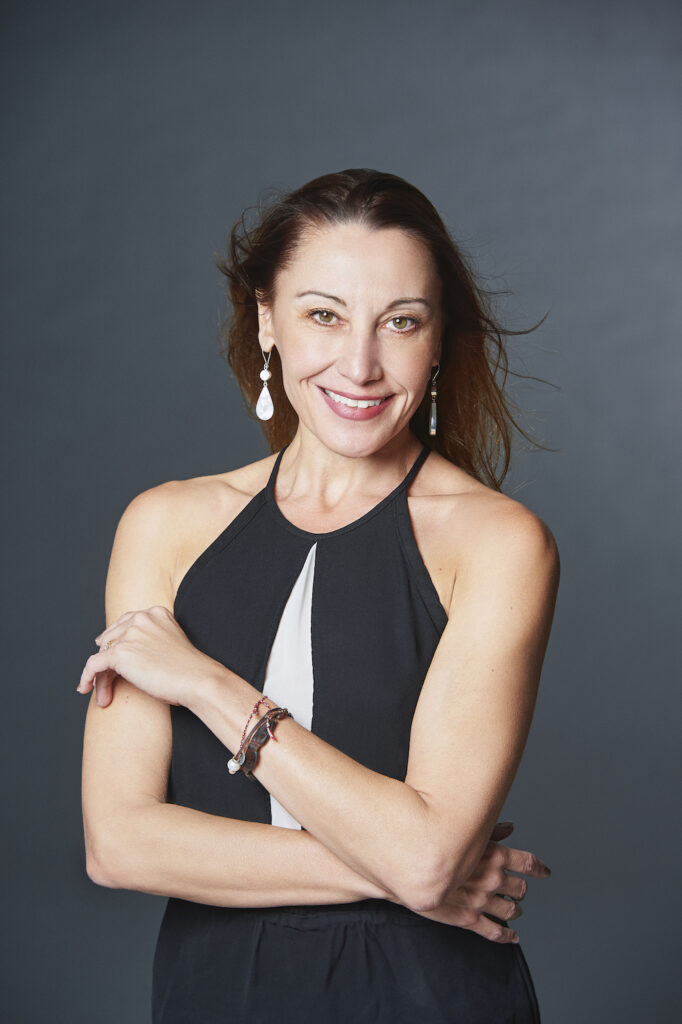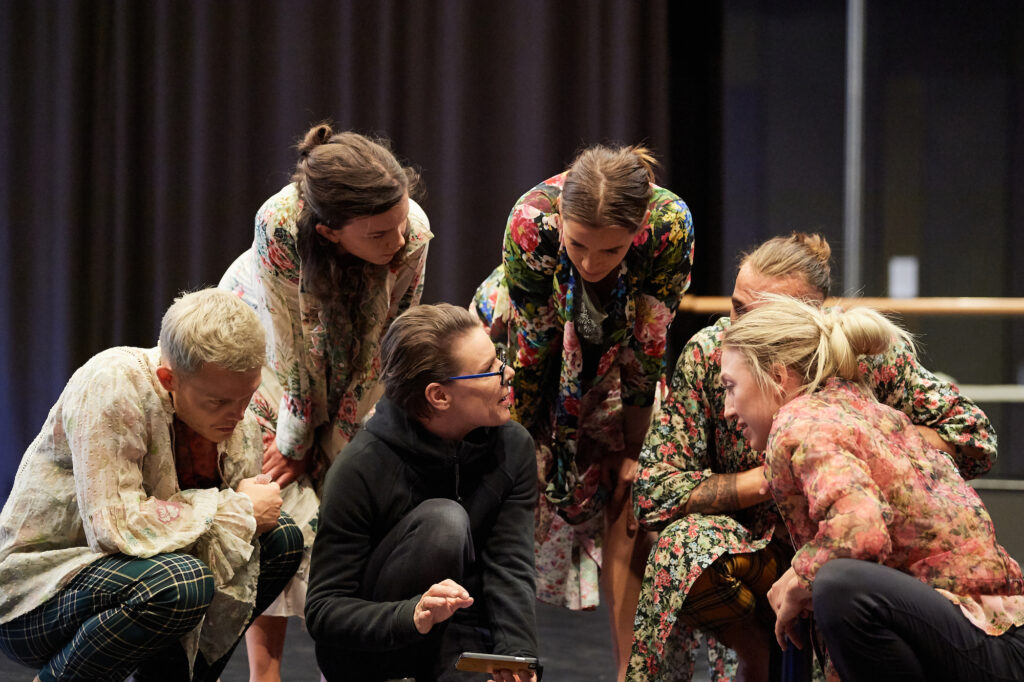Social distancing measures have affected everyone’s movements… but what about those who move for a living? Dancer and emerging dance writer Tanya Rodin reveals the ways in which Perth dance companies have negotiated the restrictions.
The dance of the screen
14 May 2020
- Reading time • 10 minutesDance
More like this
- How to watch ballet
- STRUT Dance comes of age
- Fairytale leaps to life with fun twist
As COVID-19 sprung to the floor, so did the dance of home computer screen, the supermarket 1.5m rotations around each other, the excessive dog walking, the fridge checking and re-checking, the banana bread baking, the dance of cleaning the kitchen, and of course the dance of the 2-D Zoom faces.
We’re all doing the new COVID dance… but how does this dance affect those who practise the artform for a living?
I spoke to Sandy Delasalle, Artistic Associate and Principal Ballet Mistress of West Australian Ballet (WAB) and Raewyn Hill, Artistic Director of Co:3 Australia, to find out how WA’s two flagship dance companies are negotiating the restrictions and supporting their dancers through the challenges of the Coronavirus era.
What does a company dancer’s day normally look like?
For dancers in a company, most of their days are spent with people; creating, sharing, sweating, listening, eating, creating, sweating. Being together with other artists, in the studio, is one of the most important components of a dancer’s day.

WA’s two flagship dance companies have a number of differences – WAB is a ballet company, Co:3, a contemporary company; WAB is a 68-year old company employing dancers full-time, while Co:3 is a relative newbie, established in 2014 and currently employing dancers on a project basis. Nonetheless, there are similarities to the structure of their day. Both begin with company technique class in the morning, followed by rehearsals for the rest of the day (eating in between the sweating, at some point). In addition, WAB incorporates Pilates, weights and workouts as extra conditioning, and Co:3 dancers spend at least half an hour icing their bodies and rehabilitating to conclude a working day.
In relation to the current COVID-related restrictions, the most pertinent feature of a dancer’s day is proximity to one another. Whilst dancers have excellent spatial awareness and are able to maintain distance between bodies with ease, they are often required to be in close proximity, or even in direct contact, with each other – hand to hand, knee to shoulder, nose to armpit, lift- turn-release. While the physical contact of ballet is highly stylised, a pas de deux (dance for two) still requires the two dancers to be in physical contact, and in contemporary dance, contact can involve most of the body!
Another aspect of a dancer’s day that has been affected by COVID-related guidelines is the space it requires, a need normally met by a dance studio. Dancers are sometimes referred to as space-eaters, space-moulders and space-shifters. A large space is needed for, say, ballet’s grande allegro (large leaps and jumps) or the long lunges, falls, rolls and glides that are characteristic of the contemporary dance’s travelling phrases.
Bodies weave and fly within the studio walls and written into dancers’ days is a kind of poetry, found in the routine of meeting with others in human non-screen form. It begs the question:
How are WA Ballet and Co:3 Australia ensuring that their dancers maintain their dance technique and physical fitness from home?
Training at home looks like: Zoom screens, mini barres, trying to navigate your fridge as your pas de deux partner, walking the dog, funny 80s get-fit videos, Pilates on the grass, online classes on offer, realising maybe you could paint, screen-free time… all in all, it encompasses the challenge of looking after yourself and adjusting to the new norm, in which your living room is now your studio. WA’s two flagship dance companies have each facilitated “training at home” differently, in keeping with their different programs and aims.

At WAB, artistic staff realised in advance that the dancers would be needing to train at home and developed a schedule ahead of the closure of the company’s studios and headquarters. “It was really important for [the dancers] to stick to a routine,” remarks Sandy Delasalle.
For the first fortnight of the closures, WAB dancers had a Zoom barre class every morning accompanied by their pianist (playing from his home), a mini square of Tarkett (dance floor) for pointe work, and a mini at-home barre. Also, provided via screen were yoga and cardio conditioning, as well as creative tasks for the dancers to complete. It was important, says Delasalle, to keep the dancers busy. “[Dancers] have to have goals, we have to stay creative, and we have to keep our motivation going for a purpose,” she explains.
Nonetheless there are limits to what can be practised at home – normally dancers practise on a sprung floor that provides shock absorption and reduces the risk of injury. Allegro (jumping) at home is not an option. After a few weeks, however, WAB was able to open their ballet centre, to enable the dancers to continue working on the aspects of their technique that require more space and a sprung floor. In order to follow government regulations, only two dancers per studio were permitted at a time.
For Co:3, a project-based company with the dancers not currently on contract, the situation is different, in that the company would not normally be working with its dancers at this time. Nonetheless, artistic director Raewyn Hill highlights that the most important thing, for her, has been “keeping [the dancers] connected, inspired and communicating with each other, and us, as a company.” This has involved weekly Zoom meetings, Whatsapp and Facebook chats, in which the dancers share information about the various classes and resources that have become available online.

Hill notes that an interesting side effect of the pandemic is the opportunities that have emerged online for both company and independent dancers around the world to connect with different training options. This is because companies and teachers around the world are offering classes live via platforms such as Zoom, or pre-recorded on platforms like YouTube. “COVID has taken away a lot of barriers in terms of accessing information and accessing people’s work and classes,” reflects Hill. “I think there is a greater transparency that has happened in our industry, which is really exciting.”
This opening up of classes that would normally only be available to a select few has been a major shift for the dance industry. This breaking down of the exclusivity of company class sees dancers able to engage with many techniques (even though their carpeted bedroom doesn’t compare to being with others in a dance studio). The generosity of companies and teachers in providing these classes to the international dance community has been really beautiful to see.
As a result Co:3’s dancers have had more options than they usually would, in terms of accessing classes during their non-contract time. Nonetheless, like WAB’s dancers, the lack of space, lack of sprung floor and lack of other bodies to work with means that their physical training has been compromised and the company is currently in the process of looking at ways to provide a pre-training program for their dancers, to address this issue.
How are the two companies looking after their dancers’ mental health and emotional well-being?
A dancer’s mental health is inextricably linked to their profession… and it’s not just about exercise. Dancers train to perform, with their schedules shaped around the next season, the next project. For a dancer, to be suddenly home alone, with performance seasons cancelled and no definite date for a return to the stage, is a huge risk to their mental well-being. As Hill explains, she was really concerned for her dancers, “that not only were their contracts and their performance opportunities taken away, but their actual avenue for being, for how they exist within the world, was also taken away. And suddenly they needed to cope, without that precious outlet.”
Consequently, both dance companies feel it has been vital to remain in regular personal contact with the dancers, supporting them through this uncertain time, whether it be by offering a listening ear, or someone to laugh at how their cat kept on getting in the way of their “downward dogs” in yoga. “I told the dancers, ‘You can reach me 24 hours, 7 day a week,” says Delasalle. “And some did, actually, some are calling me regularly, or they are able to contact our sports psychologist.”

And what might the company dancers take away from this experience of dancing in isolation?
As a dancer myself, I know that the uncertainty endemic in the profession has, potentially, prepared dancers well to problem solve, redirect, dodge and reimagine. As Hill observes, “What I’ve seen in all of the Co:3 dancers is this incredible resilience and this courage that they had to just look at what opportunities were in front of them, what they had, you know? It’s been absolutely incredible watching them build a pathway… and I feel like I’ve seen more courage and more strength in them come out of this. I think they have a stronger sense of what their capabilities are and how they can contribute in different ways now.”
So yes, social distancing has had an impact on company dancers, as it has on all of us, but perhaps, in these strange times we see the value in those precious things we took for granted?
With this period of enforced isolation has come permission to rest, reflect and be able to communicate honestly. Perhaps our movements need to change? Perhaps the diamonds will come out of the rock? Perhaps these companies and their dancers will emerge stronger?
After all of this perhaps we all will be so sick of screens we might need to screen distance… and dance together and appreciate those around us? I sure will be.
DISCLAIMER: Tanya Rodin is employed by Co:3 Australia in the role of project co-ordinator.
Pictured top: West Australian Ballet’s morning ballet class, via Zoom.
Want to hear from the dancers?
You can read blog posts about what it has been like working in isolation from Co:3 Australia’s Zoe Wozniak and West Australian Ballet’s Claire Voss.
Independent dancer May Greenberg has also shared her experiences of dancing in isolation with us.
Like what you're reading? Support Seesaw.





